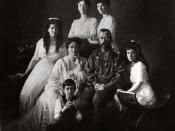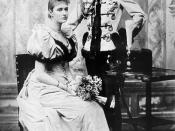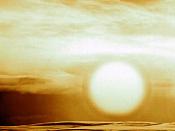When war broke out in 1914, the Tsar was at the height of his popularity. However, 3years later, in March 1917, he had been forced to abdicate and 300years of rule in Russia were over.
In 1914, 90% of 130million people were struggling peasants, and despite poor conditions, many were moving to the city to find jobs. Only 1% of this 130million people were rich landowners and factory owners.
Despite these problems, the public still liked the Tsar, and thought Russia's problems were due to the ministers. The tsar had complete control or Russia and the ministers were appointed to help him govern. He also appointed the Okhrana, which were the secret police who removed any opposition to the Tsar. He was also supported by the Orthodox Church, who taught that opposing the Tsar was a sin.
There were three main Revolutionary Groups who opposed the Tsar- the Liberals, the Social Revolutionaries, and the Social Democrats.
The Liberals were educated, middle-class Russians who wanted an elected parliament to run Russia with the Tsar. The Social Revolutionaries were peasants who wanted land divided between them and to end the Tsar's rule. The Social Democrats were communists who wanted to overthrow the Tsar and set up a communist system. The Tsar sent the leaders to prison, labour camps in Siberia, or in exile abroad.
Only 2 out of the 4 Duma's set up from 1906 to 1917 lasted, because their members supported the Tsar. Any opposers got executed or sent to labour camps. This is why most were in exile, for example, Lenin was in Switzerland.
When war was declared in 1914, there was great support for both the war and the Tsar. However, things soon began to change; the Russian armies were badly equipped...


